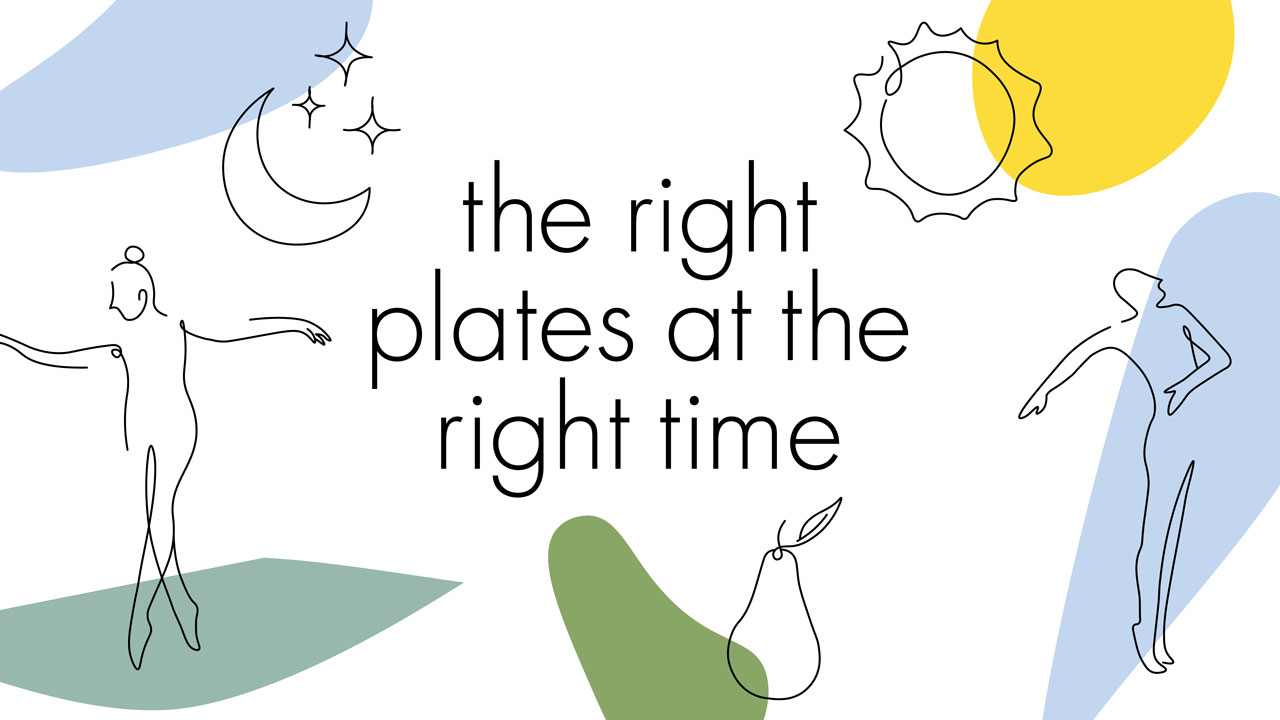To lose weight, it’s important to watch what you eat. but UAB researchers are discovering that watching when you eat could be helpful as well.
 Courtney Peterson, Ph.D.
Courtney Peterson, Ph.D.Just how helpful is a question Courtney Peterson, Ph.D., an assistant professor in the UAB School of Health Professions Department of Nutrition Sciences, is trying to answer. She has led pioneering studies examining forms of intermittent fasting—with a focus on early time-restricted feeding (eTRF). That’s when you fast for at least 14 hours or more a day and eat dinner in the mid- to late afternoon.
Her team’s research indicates that this meal-timing approach has the potential to help people lose weight because it appears to curb appetite, which may help people eat less. But it could bring other benefits, such as lowering blood pressure and blood sugar and increasing fat burning. It may even lower oxidative stress (a form of molecular damage) and possibly activate genes with anti-aging effects.
Peterson took a few minutes to explain the science—and the potential long-term advantages—of intermittent fasting and eTRF.
What is ‘intermittent fasting’ exactly?
Peterson: Intermittent fasting is any meal-timing approach that alternates periods of eating and fasting for at least 12 to 14 hours at a time. There are three broad categories: The first is periodic fasting, a full 24-hour—or longer—fast on certain days. The second is intermittent energy restriction, a very low-calorie diet on modified fasting days. Then there’s daily intermittent fasting, also called time-restricted feeding or time-restricted eating—which means you eat in a shortened period of time, like breakfast later in the day or dinner early in the day.
How does time-restricted feeding work?
Peterson: Time-restricted feeding is tantamount to daily intermittent fasting, or fasting for a regular 12- to 14-hour period, or longer, each day. You can eat early, in the middle, or late in the day. If I eat early, I might finish dinner by 2:00 p.m. If I eat in the middle of the day, I might skip breakfast and eat dinner around a normal time. If I eat late, I’m likely skipping breakfast and lunch and eating a late dinner. Unlike other forms of intermittent fasting that call for a massive cut in calories, with time-restricted feeding you can cut calories or not. In principle, you can eat the same number of calories but in a shorter time period if you want. It’s far more customizable than other forms of intermittent fasting.
Why do many of your studies focus on eTRF?
Peterson: With our circadian rhythm, our bodies are better at doing different things depending upon the time of day. For instance, your best sports performance is in the afternoon. Your best time to sleep is—no surprise!—at night, when it’s dark outside and your body starts to produce melatonin.
The best blood-sugar control is mid-morning, which suggests it may be the optimal time to eat. If you eat the same thing in the morning and in the afternoon, data suggests your blood sugar will spike higher in the afternoon. You also burn very slightly more calories by eating in the morning.

Why should we pay attention to circadian rhythm?
Peterson: We call the circadian rhythm our “internal clock,” but actually, every organ or tissue in your body has a clock, and we divide them into two clock systems. The first is in your brain—your master clock—and its time zone is set primarily by when you get bright outdoor light. The second part of the circadian system, made up of all the other clocks in your body, is set largely by the time you eat.
When you eat out of sync to when you get bright light exposure, it’s like your clocks are in two different time zones, and they give conflicting signals to your metabolism about whether to rev up or rev down. This circadian misalignment leads to metabolic dysfunction.
One of your recent studies indicates that eTRF could help people lose weight by curbing appetite. What other benefits have you uncovered?
Peterson: We looked at men who were prediabetic. One group followed eTRF, while the other group ate on a normal schedule. We found that eTRF improved blood-sugar control and insulin sensitivity. But participants also dropped their blood pressure by 10 to 11 points in only five weeks. That was a huge effect—one we didn’t expect considering they didn’t lose weight. In another study we found that while eTRF didn’t help burn more calories, it did significantly lower production of the hunger hormone, ghrelin. It also seemed to help the ability to switch between burning carbohydrates for energy to burning fat, though we need to investigate that further.
We’re about to kick off a National Institutes of Health-funded study to see if it really does matter what time of day you do time-restricted feeding. Hopefully we’ll resolve the age-old question: Is skipping breakfast bad for you?
Do you have tips for following eTRF?
Peterson: A lot of people find eTRF challenging because it’s hard to adapt your schedule, especially when you’re planning dinner for your family every night. Other studies have found you can reap many benefits of time-restricted feeding if you stick to it five days a week. It doesn’t look like you have to do it every day. But there are other meal-timing strategies to try if time-restricted feeding isn’t feasible. You’ve probably heard the old adage, “Eat breakfast like a king, lunch like a prince, and dinner like a pauper.” Research outside UAB shows that eating according to that strategy improves blood sugar and helps with weight loss, metabolism, and fertility.
Intermittent fasting is becoming popular as a weight-loss strategy. Is this a good thing?
Peterson: When I started my research, no one knew what intermittent fasting was. Now it’s everywhere, and it looks like it has the potential not only to help people lose weight but also to maintain their weight. And it could be a lifelong practice.

The right place for research
“UAB is among fewer than a dozen places in the United States where I can do my research,” Peterson says, noting the confluence of UAB’s Nutrition Obesity Research Center, the Diabetes Research Center, and the Comprehensive Diabetes Center. But the campus also houses a research kitchen that cooks all of the food for participants in her studies—an amenity few other institutions have. “That’s important to help us obtain the precise results we need,” she says. “Plus we have a respiratory chamber to analyze carbon dioxide, which lets us see how many calories participants burn—and how much is carbohydrates versus fat.” Above all, UAB’s tradition of collaboration among scientists makes such rigorous, expensive studies feasible and sustainable, Peterson adds. “I came to UAB because of its collaborative environment. You can’t do it alone.”
Early experience for undergraduate scientists
As she makes discoveries about intermittent fasting, Peterson mentors future researchers, including undergraduate students. And she follows a particular philosophy: “I want my students to have diversity in their experience,” she says. “I don’t want them doing the same thing all the time.”
For one of Peterson’s studies, a student might jump from logging and analyzing data to observing participants and monitoring how well they stick to meal-timing plans. “You become a much better scientist if you see the bigger picture,” Peterson explains. “I teach my students why we’re doing what we’re doing so they have that context.”
It’s an approach that Tulsi Patel, a pre-medicine senior majoring in biomedical sciences, appreciates. The Sylacauga, Alabama, native has helped Peterson with her eTRF studies. She has monitored participant adherence to eating schedules and managed the collection of photos from participants showing meals they ate. Now she’s analyzing exit-interview data from participants—and even devised a coding system for data gathered from those interviews. Patel has presented her research at UAB’s Expo, an event where undergraduate students showcase their scientific and service-learning projects.
Before working in Peterson’s lab, “I didn’t fully grasp the power of research,” Patel says. “I thought it was just benchwork with a greater importance of quantitative raw data. Now I see research is about innovation—about taking something further and finding a solution for future generations.”


